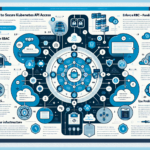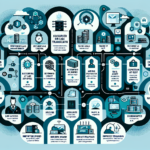Securing IT infrastructure for online marketplaces is critical to protect sensitive customer data, prevent downtime, and safeguard financial transactions. As an IT manager responsible for key infrastructure components, here are the steps you can take to secure the marketplace environment:
1. Implement Strong Access Controls
- Use Role-Based Access Control (RBAC): Ensure users only have the minimum access required for their roles.
- Multi-Factor Authentication (MFA): Enforce MFA for all administrator accounts and sensitive systems.
- Privileged Account Management (PAM): Monitor and secure accounts with elevated privileges (e.g., root/admin accounts).
- Audit Access Logs: Regularly review access logs for suspicious activity.
2. Secure the Datacenter
- Physical Security: Use biometric authentication, CCTV surveillance, and access badges to secure physical entry points.
- Redundant Power and Cooling: Protect the marketplace from downtime due to hardware overheating or power outages.
- Disaster Recovery Testing: Regularly test disaster recovery plans to ensure business continuity in case of hardware or environmental failure.
3. Harden Servers and Operating Systems
- Patch Management: Regularly update operating systems, applications, and firmware to address vulnerabilities.
- Disable Unnecessary Services: Turn off unused services and ports to minimize the attack surface.
- Host-Based Firewalls: Configure firewalls on servers to allow only necessary traffic.
- Endpoint Protection: Use antivirus and endpoint detection and response (EDR) solutions.
4. Secure Storage and Backups
- Encryption: Encrypt sensitive data at rest and in transit.
- Access Control: Limit access to storage systems based on roles and responsibilities.
- Immutable Backups: Implement immutable backups to protect against ransomware attacks.
- Offsite Backup: Store critical data backups in a secure, geographically separate location.
5. Strengthen Network Security
- Firewalls and Intrusion Prevention Systems (IPS): Deploy firewalls and IPS to block unauthorized access and detect anomalies.
- Virtual Private Network (VPN): Use VPNs for secure remote access to the marketplace infrastructure.
- Network Segmentation: Isolate critical systems (e.g., databases, payment gateways) from less sensitive environments.
- DDoS Protection: Implement anti-DDoS solutions to protect against denial-of-service attacks.
6. Protect Virtualization and Kubernetes Environments
- Isolation: Run workloads in isolated virtual machines (VMs) or containers to prevent lateral movement.
- Security Policies: Enforce Kubernetes Network Policies and Pod Security Standards.
- Secrets Management: Use tools like HashiCorp Vault or Kubernetes Secrets to securely manage sensitive data.
- Regular Updates: Update hypervisors, container runtimes, and Kubernetes clusters to patch vulnerabilities.
7. Implement AI and Machine Learning Security
- Model Privacy: Protect AI models from theft or reverse engineering.
- Anomaly Detection: Use AI-driven tools to detect unusual behavior in real-time, such as fraud or abnormal traffic patterns.
- Secure GPU Resources: Limit access to GPU servers and monitor usage to prevent abuse.
8. Ensure Secure Payment Processing
- PCI DSS Compliance: Follow the Payment Card Industry Data Security Standard (PCI DSS) to secure payment transactions.
- Tokenization: Replace sensitive payment data with tokens to minimize risk.
- Transaction Monitoring: Use fraud detection systems to monitor and flag suspicious transactions.
9. Regular Vulnerability Assessments and Penetration Testing
- Perform vulnerability scans and penetration testing regularly to identify and remediate weaknesses.
- Hire third-party security consultants or ethical hackers to simulate real-world attacks.
10. Educate Employees and Developers
- Conduct regular security awareness training for employees to recognize phishing and other attacks.
- Train developers to follow secure coding practices, such as input validation and avoiding hardcoded credentials.
11. Incident Response Plan
- Create an Incident Response Plan (IRP): Define steps to take in case of a breach or attack.
- Simulate Incidents: Perform tabletop exercises to prepare your team for real-world scenarios.
- Log Management: Use centralized logging solutions to track and analyze security events.
12. Monitor and Automate Security
- SIEM Solutions: Deploy Security Information and Event Management (SIEM) tools to monitor and analyze logs.
- Automated Threat Detection: Use AI-driven tools for real-time threat detection and response.
- Patch Automation: Automate patching processes to ensure systems stay up-to-date.
13. Compliance and Legal Requirements
- GDPR/CCPA Compliance: Ensure customer data privacy regulations are followed.
- Security Certifications: Pursue certifications like ISO 27001 to demonstrate commitment to security.
- Legal Contracts: Review third-party vendor contracts for security clauses and liability coverage.
14. Regular Security Audits
- Partner with external security firms to perform comprehensive audits of your IT infrastructure.
- Ensure compliance with industry standards and address any findings promptly.
15. Customer-Facing Security
- Secure Login: Use CAPTCHA, MFA, and rate-limiting to prevent brute force attacks on customer accounts.
- Data Encryption: Encrypt sensitive customer data like passwords and payment information.
- Fraud Prevention: Deploy tools to detect and prevent fraudulent activities on the marketplace.
Tools and Technologies to Consider:
- Firewalls: Palo Alto, Fortinet, or Cisco.
- SIEM Solutions: Splunk, QRadar, or Sentinel.
- Container Security: Aqua Security, Twistlock, or Sysdig.
- Endpoint Security: CrowdStrike, SentinelOne, or Microsoft Defender.
- Backup Solutions: Veeam, Rubrik, or Cohesity.
- DDoS Protection: Cloudflare, AWS Shield, or Akamai.
By adopting these strategies, you can effectively secure the IT infrastructure for online marketplaces while ensuring scalability, reliability, and compliance.
How do I secure IT infrastructure for online marketplaces?


